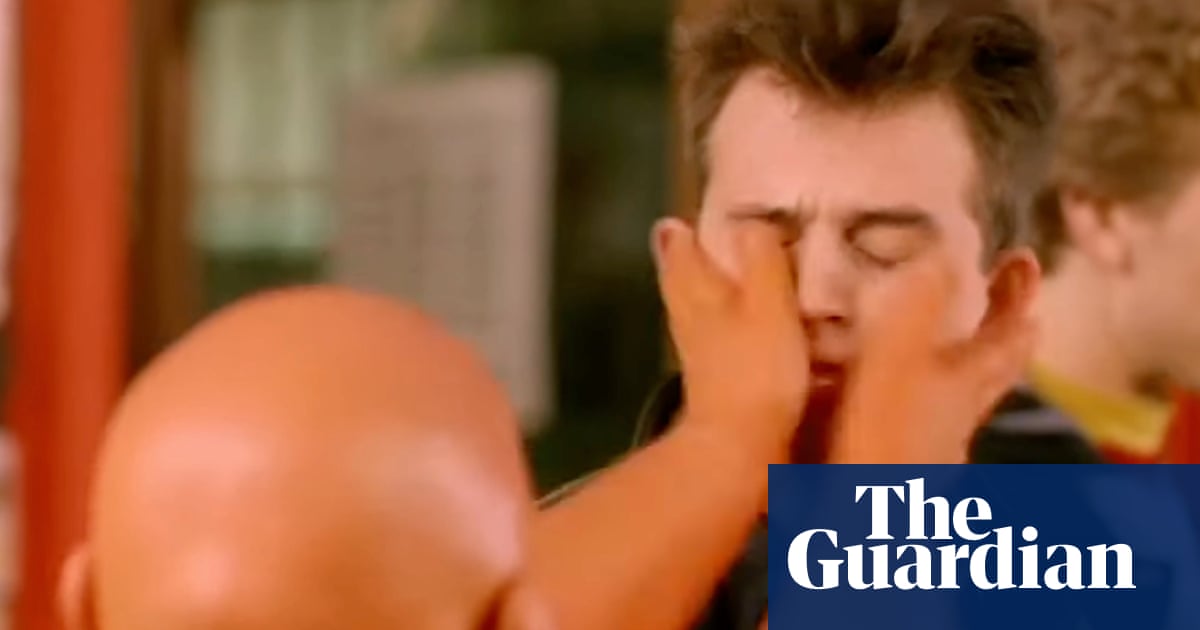
"My creative partner Al Young and I had been on the dole for 18 months when we landed our dream jobs at Howell Henry ad agency. We had to prove ourselves fast. Tango's brief was basically to get talked about. They told us: We want Coca-Cola to be afraid of this little British brand. The campaign was based around the hit of real fruit. We decided to escalate that concept, making the hit a physical thing."
"Most ads were cause and effect consume the product and something pleasant happens. We flipped that, so something unpleasant happens in a farcical way. It was almost anti-advertising. I loved Charlie Chaplin kicking people up the bum, then running off. A boot up the backside was deemed too aggressive but we figured we'd get away with a Morecambe and Wise-style slap. We shot tests with a camcorder but the slap didn't look big enough."
"We ended up putting our arms straight out to the sides, pause, then whack!. When the ad got pulled, we redid it with a kiss instead of a slap At first, it was just a fat guy. Al said: Let's make him orange, so he's more a manifestation of the drink. He became this shirtless orange genie. We auditioned loads of actors. Peter Geeves, who got the job, was a proper thespian."
The creative team was unemployed for 18 months before securing roles at Howell Henry ad agency and had to prove themselves quickly. Tango's brief demanded buzz and to make Coca-Cola afraid of the brand. The campaign amplified the 'hit of real fruit' idea by turning the hit into a physical, farcical event, flipping pleasant product-effect ads into uncomfortable slapstick. Creative choices shifted from a slap to a kiss after agency pushback. The central character became a shirtless orange genie played by Peter Geeves, with Gil Scott-Heron delivering the closing voiceover. The ad polarized audiences and provoked strong reactions.
Read at www.theguardian.com
Unable to calculate read time
Collection
[
|
...
]